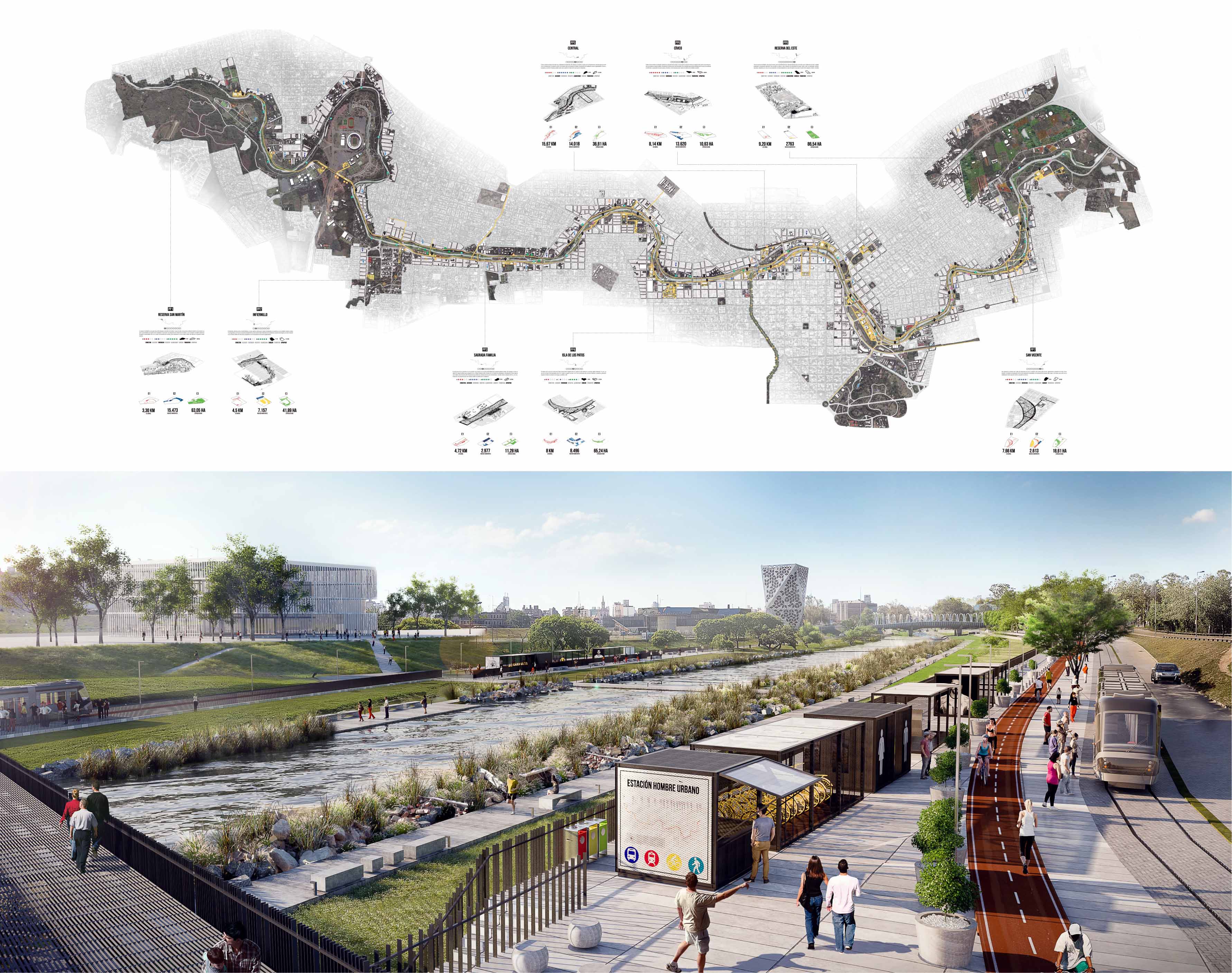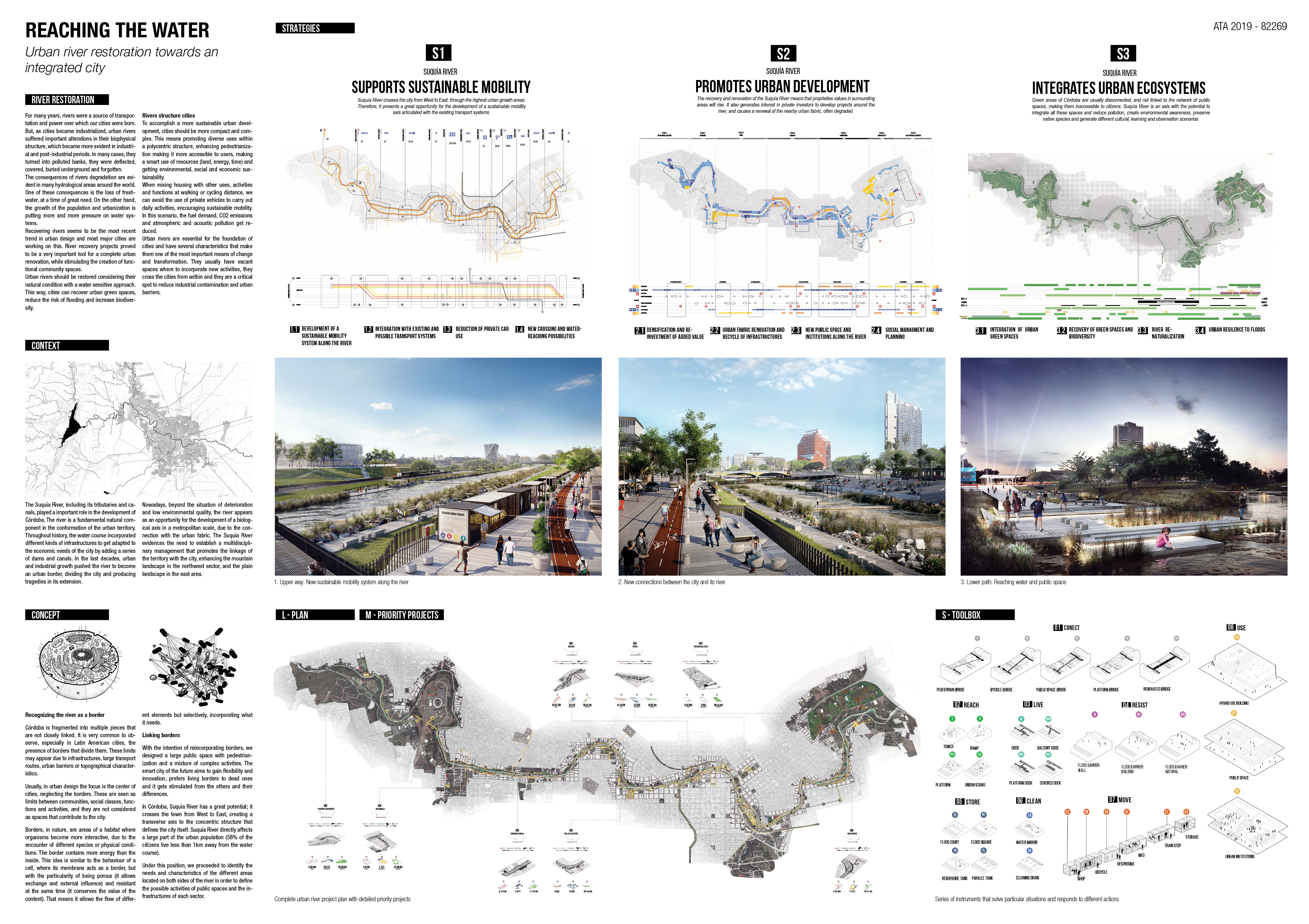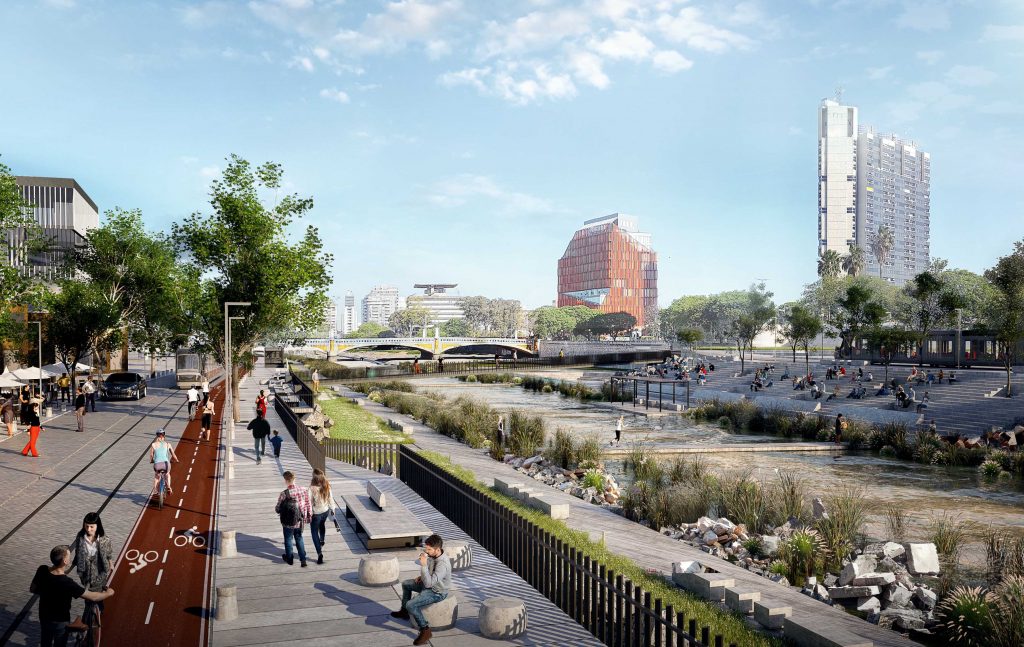For many years, rivers were a source of transportation and power over which our cities were born. But, as cities became industrialized, urban rivers suffered important alterations in their biophysical structure, which became more evident in industrial and post-industrial periods. In many cases, they turned into polluted banks, they were deflected, covered, buried underground and forgotten.
Recovering rivers seems to be the most recent trend in urban design and most major cities are working on this. River recovery projects proved to be a very important tool for a complete urban renovation, while stimulating the creation of functional community spaces.

Recognizing the river as a border: Córdoba is fragmented into multiple pieces that are not closely linked. It is very common to observe, especially in Latin American cities, the presence of borders that divide them. These limits may appear due to infrastructures, large transport routes, urban barriers or topographical characteristics. Usually, in urban design the focus is the center of cities, neglecting the borders. These are seen as limits between communities, social classes, functions and activities, and they are not considered as spaces that contribute to the city. Borders, in nature, are areas of a habitat where organisms become more interactive, due to the encounter of different species or physical conditions. The border contains more energy than the inside. This idea is similar to the behaviour of a cell, where its membrane acts as a border, but with the particularity of being porous (it allows exchange and external influence) and resistant at the same time (it conserves the value of the content). That means it allows the flow of different elements but selectively, incorporating what it needs.

Linking borders: With the intention of reincorporating borders, we designed a large public space with pedestrianization and a mixture of complex activities. The smart city of the future aims to gain flexibility and innovation, prefers living borders to dead ones and it gets stimulated from the others and their differences. In Córdoba, Suquía River has a great potential; it crosses the town from West to East, creating a transverse axis to the concentric structure that defines the city itself. Suquía River directly affects a large part of the urban population (58% of the citizens live less than 1km away from the water course). Under this position, we proceeded to identify the needs and characteristics of the different areas located on both sides of the river in order to define the possible activities of public spaces and the infrastructures of each sector.

The Board:






